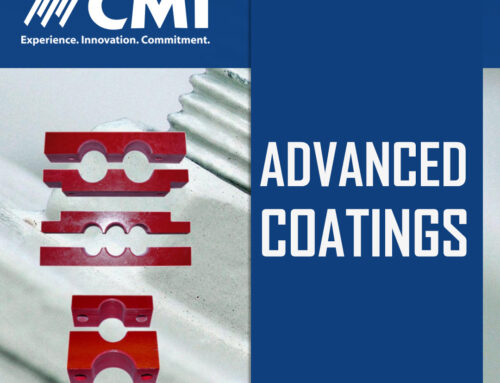Heat transfer is essential in many applications, from electronics to aerospace. Understanding thermal conductivity is crucial in designing efficient systems that effectively manage heat.
In this article, we will explore the concept of thermal conductivity, the factors affecting it, and the top 10 thermally conductive materials used in various industries. From diamond to zinc, we will analyze each material’s properties and applications, compare their thermal conductivity, and discuss their practical applications in cooling systems and electronics.
So, let’s explore heat transfer and how it impacts our daily lives.
Understanding Thermal Conductivity
Understanding thermal conductivity is crucial when it comes to heat transfer. It measures a material’s ability to conduct heat efficiently across a unit temperature gradient. Different materials have varying thermal conductivity coefficients, determining their heat transfer effectiveness.
It is important to note that thermal conductivity is a material property and is independent of the temperature gradient. The units of thermal conductivity can be expressed in SI units or imperial units. By understanding thermal conductivity, we can make informed decisions about the most efficient way to transfer heat in various temperatures and situations.
Factors Affecting Thermal Conductivity
Understanding thermal conductivity involves understanding the factors that influence it. Here are the three major elements that impact a material’s thermal conductivity.

Material Structure
One of the primary factors affecting thermal conductivity is the material’s structure. The arrangement of molecules or atoms and the bonds’ nature play a critical role in determining a material’s thermal conductivity.
Thanks to their closely packed molecular or atomic structures, solids typically have higher thermal conductivity than liquids or gases. Atoms and molecules in a solid vibrate more densely, making transferring kinetic energy (heat) to their neighboring atoms or molecules easier.
In particular, metals, having a sea of free-moving electrons, often have high thermal conductivity. These electrons can easily move and transfer thermal energy, aiding heat conduction.
Temperature
Another crucial factor is temperature. For most solids, thermal conductivity tends to increase with rising temperature up to a certain point. This is due to the increased kinetic energy (activating more molecular/atomic vibrations) that a high temperature imparts to the atoms or molecules of the solid.
However, thermal conductivity often decreases in non-metals and gases with increasing temperature. This is due to the greater distance between molecules or atoms at higher temperatures, which hinders thermal energy transfer.
Impurities and Defects
Lastly, impurities or defects in a material can significantly impact its thermal conductivity. Pure, defect-free materials often have higher thermal conductivity as there are fewer obstacles to impede the flow of thermal energy.
Impurities or defects can disturb a material’s regular atomic or molecular structure, impeding the efficient transfer of thermal energy. Hence, materials with fewer defects or impurities generally have better thermal conductivity.
Top 10 Thermally Conductive Materials
Engineers who select materials for heat transfer applications usually look for materials with high thermal conductivity. Here are the top 10 thermally conductive materials:
Diamond
Diamond, a non-metal material, stands out with its exceptional thermal conductivity, making it ideal for efficient heat transfer in various applications. Its ability to conduct heat well makes it an excellent choice for heat sink materials. Its unique properties have found application in engineering and scientific fields, proving its worth in thermal management. Diamond truly shines as a thermally conductive material.
Silver
Silver is a highly conductive material, making it valuable for heat transfer. Its excellent thermal conductivity is surpassed only by a few materials like diamond. This common material is widely used in electronics, heat exchangers, and thermal interface materials.
The high thermal conductivity of silver ensures efficient heat dissipation and transfer, making it a preferred choice in various applications. From electronics to thermal insulation, silver is crucial in conducting heat effectively.

Copper
Copper is a widely used heat exchanger because of its high thermal conductivity. It can be easily shaped and molded into various forms, making it versatile for different applications. Not only does copper have excellent corrosion resistance, but it is also a good electrical conductor, making it suitable for electronic applications. Despite its higher cost than other materials, copper’s performance and durability make it a worthwhile investment.
Gold
Gold is a highly thermally conductive material with excellent resistance to corrosion and erosion, making it suitable for use in harsh environments. It is commonly used in electronic devices and aerospace applications due to its stability and reliability. Gold also has good electrical conductivity, making it useful in circuits and wiring. However, it can be expensive and may not be the most practical choice for all applications.
Aluminum Nitride
Aluminum Nitride, a highly thermally conductive ceramic material with a thermal conductivity of up to 220 W/mK, finds common usage in electronic components, power modules, and semiconductors. Its excellent dielectric properties make it ideal for high-power applications. Additionally, Aluminum Nitride is resistant to thermal shock and chemically inert, ensuring durability and reliability in heat transfer. With these attributes, Aluminum Nitride is one of the top choices for thermally conductive materials. It is also known for its electrical insulation properties.
Silicon Carbide
Silicon carbide is a ceramic material known for its high thermal conductivity. It can withstand extreme temperatures and is resistant to oxidation and corrosion. This makes it popular in various applications, including heat exchangers, power electronics, and aerospace. Additionally, silicon carbide has high electrical conductivity, making it useful as a substrate for electronic devices. It is also being researched for potential use in renewable energy technologies like solar power and electric vehicles.

Aluminum
Aluminum is a popular choice among thermally conductive materials due to its high thermal conductivity and affordability. It is commonly used in heat sinks, which help dissipate heat from electronic components. The lightweight and corrosion-resistant properties of aluminum make it suitable for applications in the aerospace and automotive industries, primarily used to draw out unwanted heat from a heat source, ensuring the efficient operation of numerous systems and devices. By adding other materials such as copper or graphite, the thermal conductivity of aluminum can be further enhanced. However, it is important to note that aluminum may not be suitable for high-temperature applications due to its relatively low melting point.
Tungsten
Tungsten, known for its high thermal conductivity, is commonly used in high-temperature applications such as aerospace and defense industries. Its durability allows it to withstand extreme temperatures and harsh conditions. Tungsten finds applications in heat sinks, electronic components, and other heat transfer applications. Additionally, its corrosion-resistant properties make it suitable for use in harsh environments. With one of the highest thermal conductivity ratings among metals, Tungsten is a reliable and efficient choice for conducting heat.
Graphite
Graphite is a highly conductive material known for its efficient heat transfer capabilities. Its unique layered structure enables easy movement of heat through the material. Graphite’s thermal management properties are widely used in the electronics and automotive industries, making it an ideal choice for applications like heat sinks and thermal pads. Its high thermal conductivity ensures effective cooling in various temperatures. Additionally, graphite exhibits remarkable thermal stability and resistance to oxidation, making it a durable option for demanding high-temperature environments.
Zinc
Zinc, a highly conductive metal with a thermal conductivity of 116 W/(mK), is commonly used in various thermal management applications. It is lightweight, corrosion-resistant, and has a low melting point. Zinc can be easily machined and formed into different shapes and sizes, making it versatile for heat sink and heat exchanger designs. Additionally, zinc alloys, such as zinc aluminum, can enhance thermal management materials’ mechanical strength and durability. With its excellent conductivity and desirable properties, zinc is a valuable choice for efficient heat transfer.

Frequently Asked Questions
Let’s address a few common questions about thermal conductivity and its wide range of applications:
What are the benefits of using thermally conductive materials in engineering applications?
Using thermally conductive materials in engineering applications provides several benefits, including improved heat dissipation, enhanced thermal management, increased efficiency and reliability of electronic components, reduced risk of overheating and damage, and improved overall system performance.
Does thermal conductivity affect material selection?
Absolutely! Thermal conductivity often plays a decisive role in material selection, especially in applications that require effective heat dissipation or transfer.
What are the applications of thermally conductive materials?
Thermally conductive materials find uses in many applications like electronics, space technology, automotive, industrial processes, and more.
Why do metals generally have better thermal conductivity?
Due to their structural attributes and free-flowing electrons, metals typically exhibit superior thermal conductivity.
Can thermal conductivity be improved?
Yes, thermal conductivity can often be improved by adding certain impurities or through different methods of material manipulation.
Conclusion
Understanding thermal conductivity and the top thermally conductive materials is crucial for various industries and applications. By making well-informed decisions regarding material selection, engineers can significantly boost the performance and lifespan of their projects.
If you have any specific inquiries or need further assistance choosing the right thermally conductive material for your project, please contact our experts at Custom Materials. We are here to help you make informed decisions and optimize heat transfer efficiency in your applications.







